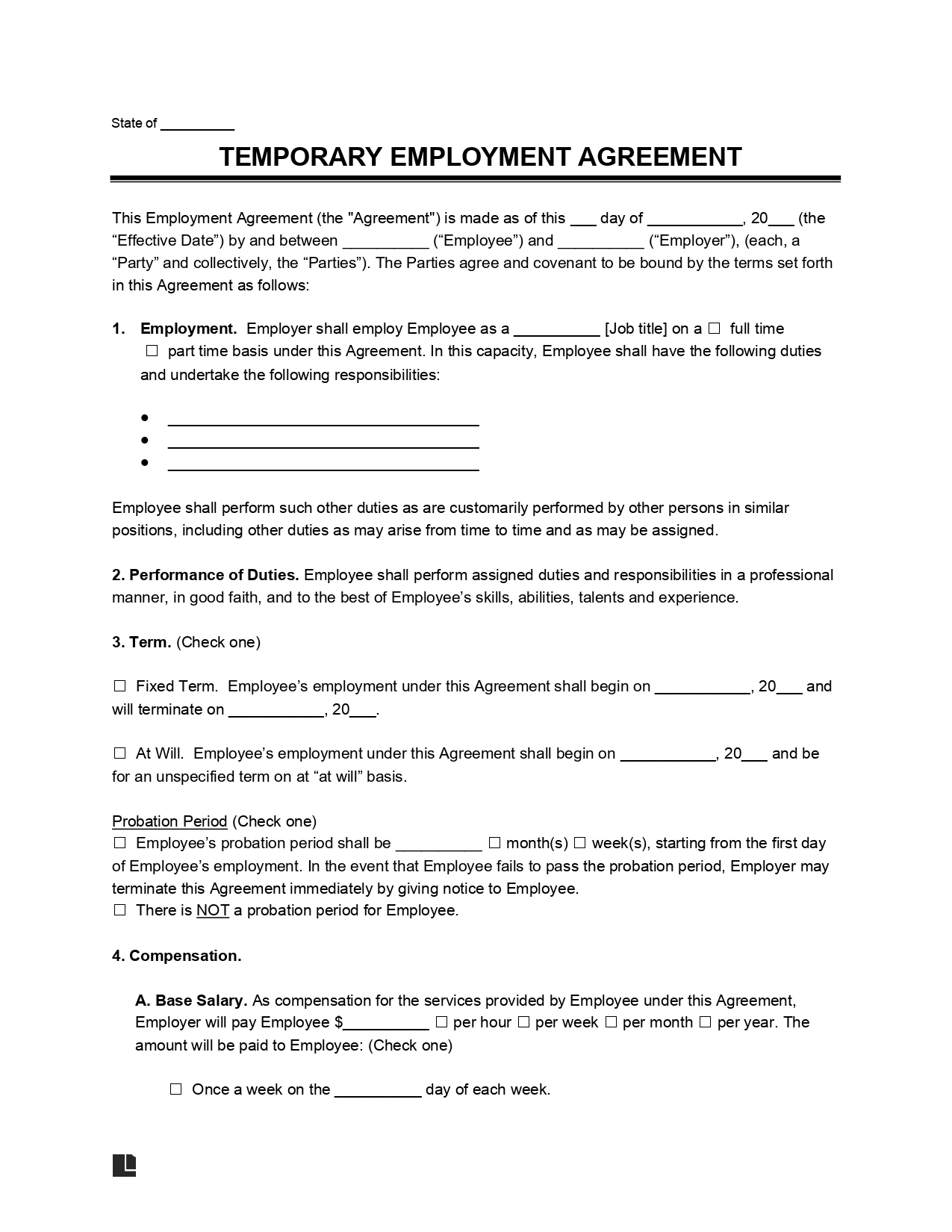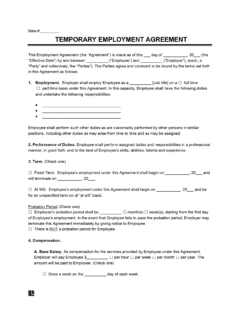
If you need to create an employment contract for a temporary employee then use our template below.

Updated August 13, 2024
Written by Josh Sainsbury | Reviewed by Brooke Davis
Regardless of the timespan, an employee will be working for your organization; there’s a need to have a legally binding temporary employment contract in place.
A temporary employment contract safeguards both employer and employee and clearly records the responsibilities, rewards, and expectations both parties agree to.
Although many organizations use a legal professional to write their temporary employment contracts, it’s possible to do the job yourself.
This temporary employment contract sample provides a comprehensive temporary employment contract template pdf that can be customized to meet your organization’s specific needs.

Like any other employment contract, a temporary contract is a legally binding agreement between the employer and the employee. It covers rights and responsibilities, ensuring both parties know what’s required.
Although the content differs between different types of contracts (for example, a freelance contract will have varying details to an independent contractor contract), the basic format will remain the same.
There is no legal definition of how long a temporary employment contract may last. That said, advice from the DoL and general good practice suggests they should not last longer than a year.
If the employee is still required after a year, they are recommended to be re-employed on a permanent contract.
Suppose there is concern about employment not being available for the entire 12-month period.
In that case, this can be reflected in the wording around hours worked (creating a casual contract) by making it clear that on some occasions, there may be no need for the employee to work, but when they do, they do so under the terms laid out in the contract.
Both contracts have benefits like agility and access to talent. Employers must ensure they follow regulations for employee rights. While temporary workers offer quick solutions, fixed-term contracts provide security.
The following information needs to be included in a temporary employment contract.
This ensures it’s clear who the contract is between.
This contract section is designed to set out the employee has responsibilities during their employment period. The exact level of detail will depend on the nature of the post and the level of seniority – more senior roles tend to focus more on outcomes rather than be process-driven.
When writing a job description for a temporary employee, it’s essential to consider their probable employment duration. Some outcomes may not be appropriate, as they are long-term goals.
Descriptors should be explicit and, ideally, measurable. Measurable descriptors make it easier to provide transparent performance assessments further down the line.
This may be a salary, a daily rate, or, in some cases, a set amount that covers a pre-agreed number of hours.
You may wish to include the number of hours to be worked if applicable – some temporary workers may only be required “as and when,” whereas others will be needed for a set number of hours each week.
If applicable, include expectations around the times of the hours to be worked (9-5, for example), as well as expectations around weekend working, shift working, or working during the holidays, if applicable.
The date on which employment with your organization commences.
Legally, there is no definition of a temporary contract; the conventional best practice is that a temporary contract lasts no longer than a year.
It’s also considered best practice that if the worker is still required after completing their 12-month contract, the position is converted into a permanent position, and a fresh contract is drawn up and signed on that basis.
It is essential to stipulate how long the contract lasts – there needs to be a precise end date, after which the contract is no longer valid.
Stipulate how much notice your temporary employee needs to give before leaving your service. Typically, notice periods for temporary employees tend to be less than those required for permanent employees.
This covers any non-financial perks or benefits that the temporary employee will enjoy. Typical examples include assistance with childcare, a subsidized canteen, paid vacation entitlement, and health insurance.
These clauses protect the employer by stipulating that the employee must not disclose confidential information about the organization to a third party and must not encourage other workers to leave with them if they leave the organization.
This clause is intended to prevent an employee from taking products or information from the company to be used elsewhere.
The employee signs to say they can’t enter into a written agreement on behalf of the organization unless they have obtained written consent.
This section sets out expectations around conduct in the workplace.

Start creating your temporary employment contract today!